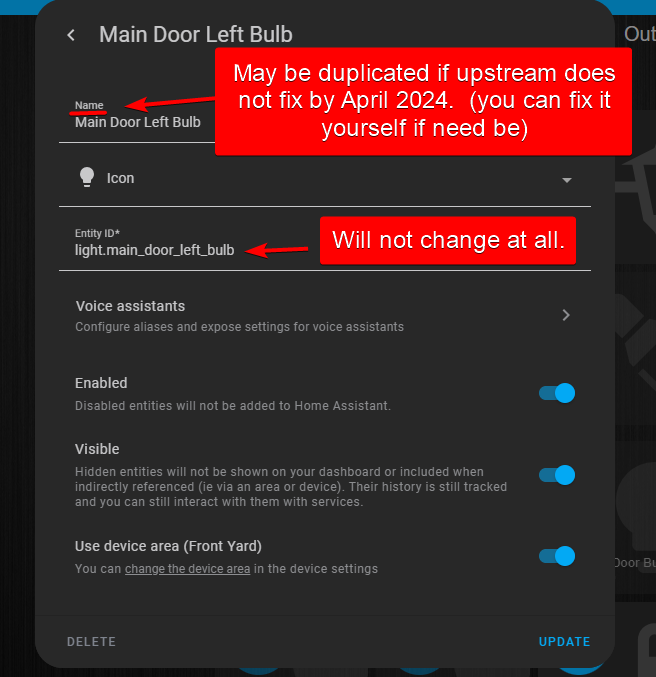We tried to host it ourselves to save cost, and it’s a beast but it mostly works. It certainly lags behind in features and uses a lot of resources, but when you compare with the cost it’s certainly passable.
surfrock66
- 7 Posts
- 23 Comments

 1·3 months ago
1·3 months agoI have submitted feedback multiple times only to click submit and find out I’m no longer logged in. That website is unnecessarily painful.

 1·5 months ago
1·5 months agoIt’s a lot for the homeland, but I love zabbix

 6·5 months ago
6·5 months agoI think the local copy I have (on a literal old samsung S3) is the same as what is downloaded from here, with the game cache files: https://sbenny.com/games/puzzle-quest-2.html
I was NOT able to make that work on my current OnePlus, even with the cache files. It fails a validation check on launch.

 8·5 months ago
8·5 months agoI would greatly appreciate that

 11·5 months ago
11·5 months agoFair, my home office is a monument to too much free time, a hoarding habit for ewaste, and a wife who works weekends and overnights.

 3·5 months ago
3·5 months agoThat is a self-made soldering kit box I made when I was in college and had to haul it around a lot. I have actually been meeting to replace it with something more permanent now that I’m a grown up with my own house. I have an air flow soldering rig which doesn’t really have a home, and I could have a much better use of space. I have my brocade ICX6610-24 next to that which I’ve been programming for way too long, and a whole bunch of 3D printer parts on top of that.

 3·5 months ago
3·5 months agoI’ve done some of that, recently I have an old putty knife and I will put it right against the crack and just hammer it which will unstick it enough that I can pull it off. Newer drives definitely have weaker magnets than some of my much older ones.

 7·5 months ago
7·5 months agoI started collecting in probably 2007, so manufactured before that for sure.

 17·5 months ago
17·5 months agoThat’s rad, and you did an amazing job keeping them whole. Recently I have been wrapping them in cloth, then the kids form clay around them for various fridge and office magnets.

 451·7 months ago
451·7 months agoI have never seen those questions answered because it’s a secret sauce that the streaming platforms would patch immediately if it were published. In general though, my understanding is it’s older versions of apk’s on rooted android devices with exploits that allow for harvesting the actual cached files, or in some cases the apk is deconstructed to get access to the API keys so that the files are downloaded directly, though that’s risky as it gets easier to detect a single key doing a giant pull of files faster than someone could reasonably watch the shows.

 2·9 months ago
2·9 months agoYes. Look here, the plan is per-device, and the capacity is unlimited: https://www.crashplan.com/pricing/ . I think the restore would be extremely painful, it's not a fast pipe, but the bigger you go that's gonna be an issue no matter what.

 3·9 months ago
3·9 months agoMob armor is a huge plus…I'm in, especially if we can trim it
I don’t have the exactly solution for you, but I went through this a while ago and came up with using openLDAP for this. It’s not tidy at all, but it was a tremendous learning experience, and I documented it in 2 blog posts which may be interesting to you; I doubt you’ll want to do what I did, but it was informative and has worked flawlessly since. I documented some of the flaws I found in options I considered at the time:
https://www.surfrock66.com/openldap-kerberos-and-sasl-my-experience-in-the-homelab/

 13·10 months ago
13·10 months agoI think discovery seasons 1 and 2 were fine and help as a precursor to snw which is great, but for sure skip discovery seasons 3 and 4

 100·11 months ago
100·11 months agoI think this is exactly what I want to see, news orgs (not just “mainstream” news, but let’s say, professional orgs in an industry) hosting their own instances with closed signups for accounts with JUST relevant topics. I tried to find some journalists on journa.host to fill in tech and local news, and while I found the people, it was way too much personal/personality content and not as much news.

 3·1 year ago
3·1 year agoI’m not an expert, but I’ve been using TrueNas Scale since I cut over from TrueNAS core, and before that Freenas, since about 2010. I have a bunch of lessons and assumptions, but someone can correct me if these are misguided, they’re my tl;dr of knowledge.
- Your data drives should be in sets of 3 for a raidz1, or 5+ (I use 6) for a raidz2. While technically the minimum is 2 or 4 respectively, best performance and protection comes in sets of 3. This is a good synopses: https://superuser.com/a/1058545 In that case he points out that a 3-way mirror also works but then you lose a lot of the data integrity checking that comes with ZFS. I keep an offline spare; in your situation putting 3 drives in with a RAIDZ1 and keeping one in the drawer would give you ~8TB of capacity protected against bit flipping and drive failure. This is a better description of the raid levels: https://calomel.org/zfs_raid_speed_capacity.html
- In terms of just storage, that system will be fine, though ideally you get ECC RAM; that’s often a bigger swap, so if you can’t change that, so be it. It does matter in terms of integrity checking. The more containers you run, the tougher it gets to spec out. I have a separate proxmox hypervisor and routinely have 4+ jellyfin streams going at a time, so it wouldn’t be enough in my case, but you’ll have to experiment and scale. I will say, even though a separate proxmox box comes with a lot of headaches, it was more important than any schooling I ever did in terms of my IT career. Networking, monitoring, access control, suddenly I have a solution to every IT problem I encounter and I have experience with it.
- Personally, I do a 2-disk mirror for the OS, and then multiple 3 or 6 disk vdevs for data. If you lose the OS drive and it’s just 1, that’s fine if you have backups to just restore, but I find swapping in a cheap ssd is better. I use cheap-as-dirt 64G SSD’s as the boot drives, and if one dies, you can swap it and replace it in the UI, no problem. You can technically use 2 mis-matched sized disks, but it’ll fuss at you.
- Start with TrueNAS Scale as just a storage device; ideally that needs to be close to the hardware and not virtualized. In the beginning, especially since you’re likely dealing with 1 pool, just make 1 vdev for everything. You can make folders in there, or datasets, and play with partitioning data, sharing data to other computers, etc. I use NFS sharing AND iscsi luns to my proxmox, and ultimately I’m in 1 big dataset with multiple vdevs in it. Add your things like homeassistant one at a time; going through it will show you how you sort storage, how you provision it, etc. Over time, things grow; this will not be your final configuration, most people expand over time. You may decide “I want bulk storage in one vdev, I want containers and vm’s in another.” When you expand, that’s when you split things off and make more nuanced decisions. That will come from better assessing your needs.
You mention Jellyfin…my struggles with that were never storage. My struggles there were networking; it was a big part of why I decided to upgrade my server networking to 10G, which supported running Jellyfin on another hypervisor and having all that go over the network.

 31·1 year ago
31·1 year agoFor most systems, ext4 because it seems stable and uncomplicated.
For my NAS and big data, ZFS. People whose opinions I trust recommend it, and to the best of my technical ability to evaluate said things, the claims make sense and seem to be extremely beneficial against the threats I perceive to my data.

 1·1 year ago
1·1 year agoTt-rss though the developer can be a bit abrasive if you go asking for help. Been using it since the icanhaz days.





Universities have huge endowments and investment portfolios. These are generally broad and in support of keeping the financial backing of the school stable; this is extremely prevalent in the large older universities like Harvard or Columbia (but almost all universities have one in some form or another). They support both students and ongoing academic research.
While many of these portfolios consist of wider funds, many have specific investments in specific companies and industries. That means that the university is invested in, and taking benefit from, areas of industry. The main request is to divest the investment portfolios from companies owned by or supporting entities connected with Israel’s war on Gaza. In some cases this may be possible (move a ton of stock from a defense contractor making weapons sold to Israel to an energy company) and in some cases it may not (they’re invested in a wide market fund that itself invests in specific funds, but you can’t easily cherry-pick which stocks are actually in it). It’s also possible that there are research grants funded through companies who the students want to apply negative pressure to; cancelling a grant sends a message to the company, but also leaves entire teams and time-dependent science without funding, potentially ending it outright unless alternate funding can be found. There also may be contracts involved for specific research and engagements, and breaking a contract is more complicated than just ripping it up (especially if there are early termination policies outlined).
Realistically, the best students can hope for is a commitment to investigate and divest where possible, which is frustrating but also makes sense. I’ve worked in higher education for 20 years and have seen this on a smaller scale around defense contractors during the wars in Afghanistan and Iraq. The endowment is a slow moving leviathan, but I think it’s a good place for the students to apply pressure.